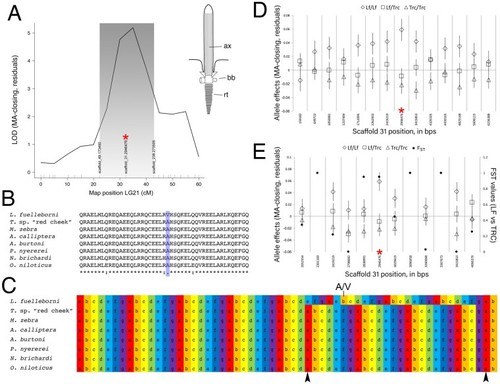Fig . 2.
- ID
- ZDB-FIG-210802-2
- Publication
- Gilbert et al., 2021 - Ciliary rootlet coiled-coil 2 (crocc2) is associated with evolutionary divergence and plasticity of cichlid jaw shape
- Other Figures
- All Figure Page
- Back to All Figure Page
|
Mapping of lower jaw mechanical advantage in cichlids. The QTL for relative height of the articular process (i.e., mechanical advantage of jaw closing, “MA-closing”) maps to LG21 and peaks over a marker on physical scaffold number 31 ( |

